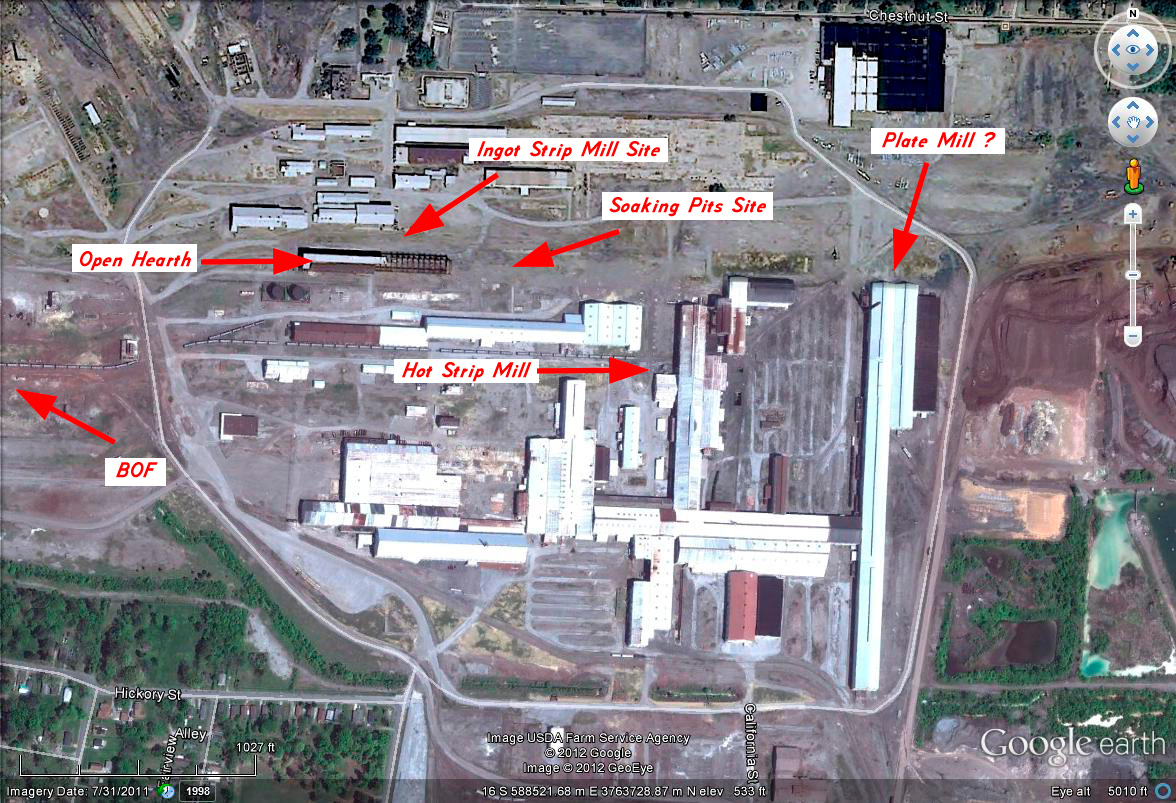Eric,
Great pictures!
The locomotives may have been brought in after the mill closed as the smallest locomotives on the property when I left in '86 were either 65 or 80 tons and there were only 2 or 3 of them.
Also you have a couple of photos labeled "Open Hearth building". The shots with a building with some sheet metal on the walls is either the mold shed or the stripper building. The mold shed prepared the ingot molds to be poured in the BOF shop. The stripper building removed the molds from the ingots. The ingots were then transferred down to the Blooming Mill were the were loaded into the soaking pits to reheat them.
The Bolt & Nut buildings were not originally warehouse space but were the mill buildings. All of the original machinery in the buildings was powered by overhead shafts. I never saw any of the original machines, but would occasionally walk thru the buildings enroute to the operating mills and marvel at the overhead shafts and wonder what it was like in the "day".
You had a photo of a large building which you didn't have a comment on. I think was the Plate Mill. If I'm correct it was at the east end of the plant and your shot was to the south.
I'll try to check the thread a couple of times a day over the weekend in case there are any questions that I can answer.
Thanks for the trip down "Memory Lane".
Glenn


